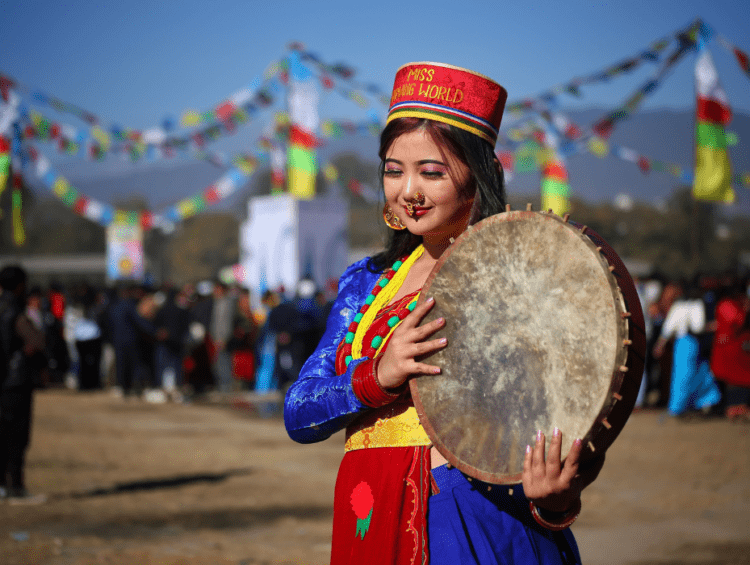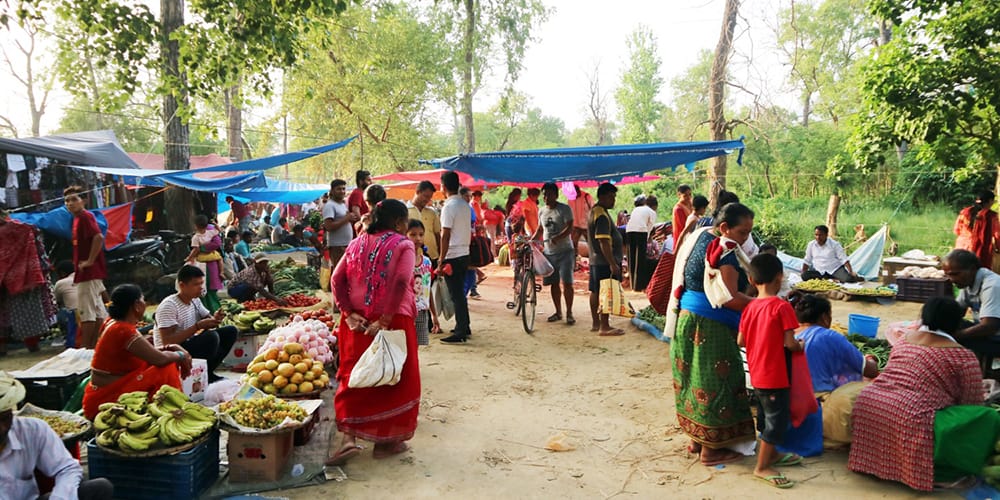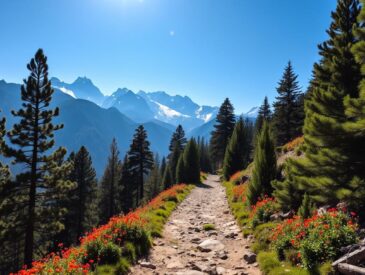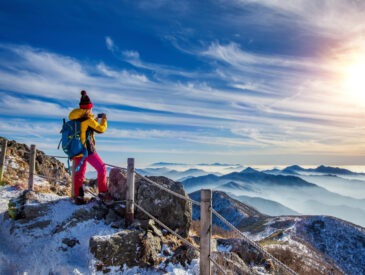Nepal, a land of breathtaking landscapes and rich cultural heritage, is a country where traditions and customs play a significant role in daily life. Understanding cultural etiquette in Nepal is not just about following rules; it’s about showing respect for the local way of life and building meaningful connections with the people. Whether you’re visiting bustling cities like Kathmandu, exploring serene villages, or trekking in the Himalayas, being mindful of cultural etiquette in Nepal will enhance your experience and leave a positive impression on the locals.
Greetings in Nepal are more than just a formality—they are a reflection of respect and humility. The traditional greeting, Namaste, involves folding your hands together in front of your chest and slightly bowing your head. This gesture, which translates to “I bow to the divine in you,” is deeply rooted in Nepali culture and is a key aspect of cultural etiquette in Nepal.
- Addressing Elders: Respect for elders is a cornerstone of Nepali society. When greeting older individuals, it’s customary to use honorifics such as Dai (for older men) and Didi (for older women). These terms signify respect and acknowledge their seniority.
- Physical Space: While Nepali people are known for their warmth and hospitality, it’s important to maintain appropriate physical space, especially between opposite genders. Public displays of affection, such as hugging or holding hands, are generally avoided.
- Conversation Topics: When engaging in conversations, avoid sensitive topics such as politics, religion, or criticism of local customs. Instead, focus on positive subjects like Nepal’s natural beauty, cultural heritage, or traditional festivals.
Dress Code
Nepal is a conservative country, and dressing modestly is an essential part of cultural etiquette in Nepal. This is especially important when visiting religious sites, rural areas, or attending cultural events.
- Modest Clothing: Both men and women should avoid revealing clothing. Shoulders and knees should be covered, particularly when entering temples or monasteries. Loose-fitting clothing is not only respectful but also practical in Nepal’s varied climate.
- Traditional Attire: During festivals or special occasions, you may see locals wearing traditional clothing. Women often wear saris or kurta suruwals, while men don daura suruwals (a knee-length shirt paired with trousers) or dhaka topis (traditional Nepali hats). Wearing traditional attire, if invited to do so, is a wonderful way to show appreciation for Nepali culture.
- Footwear: Always remove your shoes before entering someone’s home, a temple, or any religious site. This is a sign of respect and cleanliness.
Dining Etiquette
Nepali cuisine is a delightful blend of flavors, and sharing a meal is an integral part of the culture. However, dining in Nepal comes with its own set of customs that are important to observe as part of cultural etiquette in Nepal.
- Eating with Hands: In many Nepali households and traditional settings, food is eaten with the right hand. The left hand is considered impure and should not be used for eating or passing food.
- Sharing Food: Unlike in some cultures, sharing food from your plate or using utensils that have touched your mouth to take food from communal dishes is discouraged. This practice is rooted in hygiene and respect for others.
- Finishing Your Plate: Leaving food uneaten is seen as wasteful and disrespectful to the host. It’s polite to take only as much as you can eat and finish everything on your plate.
- Dining Hierarchy: In traditional settings, elders are often served first, followed by others. Wait for the host to invite you to start eating before you begin your meal.
- Thanking the Host: After the meal, expressing gratitude to the host is a key part of cultural etiquette in Nepal. A simple Dhanyabad (thank you) goes a long way in showing appreciation.
Religious Etiquette
Nepal is a melting pot of religions, with Hinduism and Buddhism being the most prominent. Respecting religious practices is a fundamental aspect of cultural etiquette in Nepal.
- Temples and Monasteries: When visiting religious sites, always remove your shoes and dress modestly. Walk clockwise around stupas and shrines, as this is considered auspicious. Avoid touching religious artifacts or statues unless given permission.
- Offerings and Donations: It’s common to see locals making offerings at temples or monasteries. If you wish to participate, do so respectfully and follow the lead of others. Donations are often appreciated but should be given discreetly.
- Photography: Always ask for permission before taking photos of people, especially in religious settings. Some temples and monasteries may prohibit photography altogether, so be sure to check beforehand.
- Festivals and Rituals: Nepal is home to numerous festivals, such as Dashain, Tihar, and Buddha Jayanti. If you’re fortunate enough to witness these celebrations, observe quietly and avoid interrupting rituals.
Social Etiquette and Behavior
Nepali society places a strong emphasis on respect, humility, and community. Understanding the nuances of social behavior is an important part of cultural etiquette in Nepal.
- Accepting Offers: Nepali people are incredibly hospitable and may offer you food, tea, or other gestures of kindness. Politely accepting these offers, even if it’s just a small amount, is a sign of respect.
- Public Behavior: Loud or aggressive behavior is frowned upon in Nepal. Maintain a calm and respectful demeanor, especially in public spaces.
- Gift-Giving: If invited to a Nepali home, bringing a small gift, such as sweets or fruit, is a thoughtful gesture. Gifts should be offered with both hands as a sign of respect.
- Avoiding Offense: Pointing with your finger, stepping over someone’s legs, or touching someone’s head are considered disrespectful. Always use your right hand when giving or receiving items.
Festivals and Cultural Celebrations
Nepal’s festivals are a vibrant reflection of its cultural diversity and religious harmony. Participating in or observing these celebrations is a wonderful way to experience cultural etiquette in Nepal.
- Dashain: The longest and most significant Hindu festival in Nepal, Dashain is a time for family reunions, feasts, and religious rituals. It’s customary to receive tika (a mixture of rice, yogurt, and vermillion) and blessings from elders during this festival.
- Tihar: Known as the festival of lights, Tihar is celebrated with great enthusiasm. Homes are decorated with oil lamps, and offerings are made to animals such as crows, dogs, and cows, which hold cultural significance.
- Holi: The festival of colors is celebrated with joy and enthusiasm. While participating, be mindful of others’ boundaries and avoid being overly aggressive with colors.
- Buddha Jayanti: This festival marks the birth of Lord Buddha and is celebrated with prayers, processions, and visits to Buddhist shrines.
Tips for Travelers
For travelers, understanding cultural etiquette in Nepal is key to having a smooth and enjoyable trip. Here are some additional tips:
- Learn Basic Nepali Phrases: While many Nepali people speak English, learning a few basic phrases in Nepali, such as Namaste (hello), Dhanyabad (thank you), and Maaph garnus (excuse me), can go a long way in building rapport.
- Respect Local Customs: Be open-minded and willing to adapt to local customs. If you’re unsure about something, don’t hesitate to ask for guidance.
- Environmental Awareness: Nepal’s natural beauty is one of its greatest assets. Practice responsible tourism by avoiding littering, respecting wildlife, and supporting eco-friendly initiatives.
- Support Local Communities: Whenever possible, support local businesses, artisans, and guides. This not only contributes to the local economy but also fosters cultural exchange.
Conclusion
Nepal is a country where tradition and modernity coexist harmoniously, and understanding cultural etiquette in Nepal is the key to unlocking its true essence. By respecting local customs, dressing modestly, and engaging with the community in a thoughtful manner, you’ll not only enrich your own experience but also leave a positive impact on the places and people you encounter. Whether you’re marveling at the snow-capped peaks of the Himalayas, exploring ancient temples, or sharing a meal with a local family, embracing cultural etiquette in Nepal will ensure that your journey is as rewarding as it is unforgettable.






